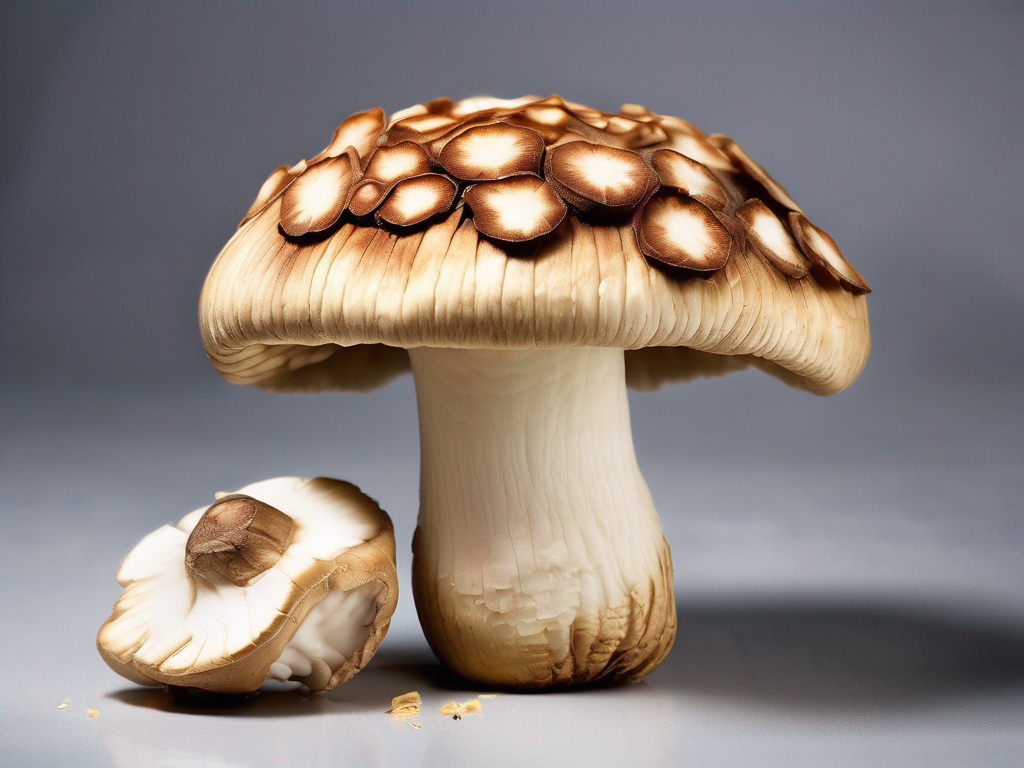
Signs that Matsutake Mushrooms Have Gone Bad
Get Your Free Food Safety Cheat Sheet
30 most common foods with instant answers. Print it and stick it on your fridge—completely free!
Signs that Matsutake Mushrooms Have Gone Bad
Matsutake mushrooms, also known as "pine mushrooms," are a delicacy highly prized in Japanese cuisine for their unique flavor and aromatic qualities. However, like any perishable food item, matsutake mushrooms can spoil if not stored properly. In this blog post, we will discuss the signs that indicate matsutake mushrooms have gone bad and provide you with essential tips on how to ensure the safety and freshness of these prized fungi. (Matsutake mushrooms)
Understanding Matsutake Mushrooms
Before we delve into the signs of spoilage, let's first understand what matsutake mushrooms are and why they are so highly regarded in culinary circles. Matsutake mushrooms are typically found in coniferous forests and are known for their strong spicy aroma and meaty texture. They are often used in soups, stews, and rice dishes, adding a unique umami flavor to the dish.
If you are interested in learning more about matsutake mushrooms, you can check out this informative article on [matsutake mushrooms](/food/matsutake mushrooms).
Signs of Spoiled Matsutake Mushrooms
Visual Indications
-
Slimy Texture: When matsutake mushrooms start to spoil, they may develop a slimy or sticky texture. This is a clear indication that the mushrooms have begun to break down and should be discarded.
-
Discoloration: Look out for any dark spots, browning, or mold growth on the mushrooms. Discoloration is a sign of bacterial or fungal growth, indicating that the mushrooms are no longer safe to consume.
Olfactory Clues
- Off Odor: Fresh matsutake mushrooms have a distinct spicy and pine-like aroma. If you notice any foul or unpleasant odors emanating from the mushrooms, it is a strong indication that they have gone bad.
Tactile Cues
- Soft or Mushy Texture: Healthy matsutake mushrooms should have a firm and slightly crunchy texture. Mushrooms that feel soft, mushy, or spongy to the touch are likely past their prime and should be discarded.
Tips for Ensuring Mushroom Safety and Freshness
Now that you are aware of the signs of spoiled matsutake mushrooms, here are some practical tips to help you ensure the safety and freshness of these prized fungi:
-
Purchase Fresh Mushrooms: When buying matsutake mushrooms, choose specimens that are firm, with a strong aroma and no visible signs of spoilage.
-
Proper Storage: Store matsutake mushrooms in a paper bag or a breathable container in the refrigerator. Avoid storing them in plastic bags, as this can promote moisture buildup and lead to spoilage.
-
Use Promptly: Matsutake mushrooms are best consumed fresh. Try to use them within a few days of purchase to enjoy their optimal flavor and texture.
-
Inspect Before Use: Before cooking with matsutake mushrooms, always inspect them for any signs of spoilage, including sliminess, discoloration, or off odors.
-
Cook Thoroughly: To ensure food safety, always cook matsutake mushrooms thoroughly before consuming. Proper cooking helps kill any harmful bacteria that may be present on the mushrooms.
Conclusion
In conclusion, matsutake mushrooms are a prized culinary ingredient that should be handled with care to ensure their safety and freshness. By being aware of the signs of spoilage and following proper storage and handling practices, you can enjoy the unique flavors of matsutake mushrooms in your dishes while safeguarding your health. Remember to trust your senses and use your best judgment when it comes to determining the quality of matsutake mushrooms before consumption. (Matsutake mushrooms)
Authoritative Food Safety References
These agencies and university labs inform every tip and health precaution we publish.
USDA FoodKeeper – Cold Storage Guidelines
Official refrigerator, freezer, and pantry timelines maintained by the U.S. Department of Agriculture.
Visit USDA FoodKeeperFDA Produce Safety Rule & Grower Guidance
Field-to-fridge handling practices that prevent contamination of fruits, vegetables, and leafy greens.
Visit FDA Produce SafetyCDC Foodborne Illness Prevention Hub
Surveillance-backed guidance on pathogens, symptoms, and steps to reduce foodborne illness risk.
Visit CDC Food SafetyUC Davis Postharvest Technology Center
University research detailing optimal storage atmospheres for produce after harvest.
Visit UC Davis PostharvestPenn State Extension – Home Food Preservation & Safety
Peer-reviewed extension bulletins on safe canning, chilling, and reheating practices.
Visit Penn State ExtensionGet Your Free Food Safety Cheat Sheet
30 most common foods with instant answers. Print it and stick it on your fridge—completely free! Want more? Upgrade to the complete guide with 70+ foods.
Scan your food directly and get instant safety info using our AI-powered camera feature.